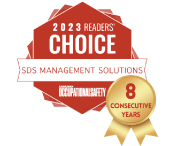Methanol Exposure Control Plans
Chemscape Safety Technologies offers trusted methanol exposure control plans (ECPs) based on our Chemical Hazard Assessment and Management Program (CHAMP) tool and industrial hygiene services. Our team creates comprehensive and industry-leading methanol exposure control plans designed to uniquely for the unique businesses and industry needs of our clients.
Why Is a Methanol Exposure Control Plan Important?
A methanol exposure control plan is a document that’s part of an organization’s overall chemical safety management program. It details the exposure hazards of methanol that workers may encounter while performing their duties and also outlines the available protective measures against methanol exposure. Regulatory bodies such as WorkSafeBC in British Columbia require employers to develop ECPs.
What Is Methanol?
Methanol is a clear, colourless liquid. It's also known by various other names such as methyl alcohol, wood alcohol and wood spirits. Modern manufacturers primarily produce methanol from methane, although it was originally distilled from wood. Many biological processes produce methanol as a waste product, so it also occurs in plant and animal tissue in small amounts. Methanol burns with a clear flame that’s virtually invisible, which can pose a significant safety hazard.
What Are the Properties of Methanol?
Methanol is highly flammable; it mixes well with air and can be explosive. Methanol is particularly dangerous in the presence of strong oxidizing agents such as bromine, chlorine, hydrogen peroxide and sodium hypochlorite. It’s also heavier than air, so methanol can accumulate in low areas and can travel a considerable distance from its source.
What Are the Uses of Methanol in the Workplace?
Methanol is commonly used in the production of other chemicals and as a solvent. Chemicals that require methanol as a precursor include gasoline, acetic acid, formaldehyde, and methyl methacrylate. Products that contain methanol as a solvent include antifreeze refrigeration systems, laboratory equipment, refrigerators and systems, and oilfield chemicals such as corrosion inhibitors and demulsifies. The oil and gas industry use methanol in many applications to prevent hydrates from forming in petroleum products at low temperatures.
Methanol is also used in a variety of products such as:
- Artificial Sweeteners
- Inks & Dyes
- Paint Thinner
- Plastics
- Shellac
- Windshield Washer Fluid
How Are Workers Exposed to Methanol?
Exposure to methanol in the workplace typically occurs by breathing methanol vapour, although ingestion is the most common exposure route overall. Methanol’s toxicity is due to two distinct mechanisms, including depression of the central nervous system (CNS) and the metabolism of methanol into formic acid.
Short-Term Effects of Methanol Exposure in Workers
CNS depression causes the initial symptoms, which include confusion, dizziness, nausea and loss of coordination. Symptoms caused by the metabolism of methanol arise at least 10 hours after exposure and include acidosis, blurred vision and intracranial hemorrhages. Other signs of methanol poisoning include rapid breathing and dilated pupils.
Chronic and Long-Term Effects of Exposure to Methanol
There is currently little scientific information regarding the long-term health concerns for workers exposed to Methanol, however, studies indicate that long-term health concerns are similar to the acute health effects, which include contact dermatitis.
Prevention and Minimizing Methanol Exposure in The Workplace
The preferred method of minimizing exposure of methanol is by substituting for less harmful and hazardous chemicals within the work setting or production process. Engineering controls and changes in work practices can also reduce the exposure of workers to methanol. Personal protective equipment (PPE) is useful in high-risk areas, especially when methanol is already present.
Employer and employee responsibilities
For workers who are working directly with methanol or with substances and products that contain methanol, it's imperative that workers are thoroughly trained in understanding the health and physical hazards associated with methanol exposure. Workers must participate in training programs for monitoring methanol levels in the air. Workers must also have access to SDS sheets and proper PPE equipment in an effort to minimize employee exposure to methanol.
Employer Responsibilities
When it comes to minimizing exposure to methanol, employers must provide adequate training and health and safety education to employees working with methanol. Employers must keep their exposure control plans for methanol updated in response to changes in government regulations and operating conditions. They also need to conduct periodic audits to ensure their organizations are in regulatory compliance.
Trusted Methanol Control Plans Approved by WorkSafeBC
Chemscape Safety Technologies is the leading developer of chemical management solutions, which includes the creation of methanol exposure control plans. Our team develops exposure control plans and chemical management solutions that are designed for the unique business and operation needs of our clients – all while maintaining WorkSafeBC regulations and industry standards. Contact our team of occupational health and safety professionals to learn more about the development of custom methanol ECP for your business.



